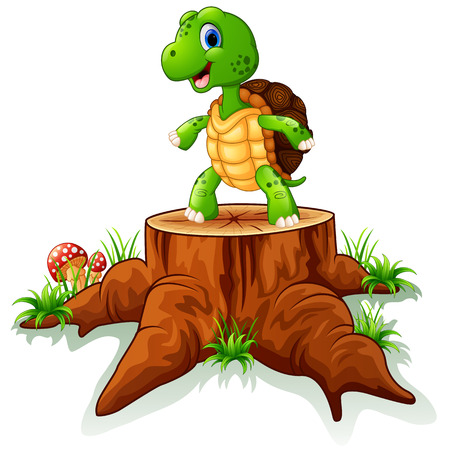1. Understanding Reptile Enrichment
When we talk about enrichment for reptiles, were referring to the activities, environments, and objects that encourage your pet’s natural behaviours, keeping them mentally and physically stimulated. Unlike cats and dogs, reptiles such as bearded dragons, leopard geckos, corn snakes, and royal pythons—some of the most popular species kept in British homes—have often been thought of as low-maintenance pets needing little more than food and warmth. However, recent studies and growing experience among UK reptile keepers highlight how crucial enrichment is for their overall well-being. Without adequate stimulation, reptiles can become bored or stressed, leading to issues like lethargy, loss of appetite, repetitive pacing (sometimes called ‘glass surfing’), or even aggression. Enrichment isn’t just about entertainment; it’s vital for supporting healthy behaviours such as hunting, exploring, basking, and climbing. By understanding what enrichment means for our scaly companions and recognising the risks of boredom, we can provide a more naturalistic and fulfilling life for these fascinating pets.
2. Habitat Enhancements: Beyond the Basics
Creating a stimulating and comfortable home for your reptile goes far beyond simply providing heat and water. Upgrading your vivarium or terrarium with thoughtful, creative touches helps to mimic both British and exotic natural habitats, keeping your reptile active, engaged, and free from boredom. Start by considering how reptiles in the wild would interact with their environment—think about spaces to hide, climb, burrow, and explore.
Naturalistic Hides
Hides are crucial for all reptiles, offering a sense of security and a place to retreat. Rather than just using basic plastic caves, try incorporating natural materials such as cork bark tubes, mossy logs, or even hand-crafted stone dens. For British species like slow-worms or adders, you might use bundles of leaf litter or hollowed logs commonly found in local woodlands. Exotic reptiles such as leopard geckos or chameleons often appreciate rock piles or coconut shells that echo their native terrain.
Climbing Branches and Vertical Space
Many reptiles are natural climbers and will benefit enormously from a habitat with plenty of vertical opportunities. Strategically placed branches—birch, hazel, or willow for native species; sturdy bamboo or grapevine for tropical pets—invite your reptile to exercise and explore different levels within their enclosure. You can attach branches at various heights, creating platforms and lookout spots that help keep your pet mentally stimulated while also supporting healthy muscle development.
Substrate Variations
The substrate you choose can have a significant impact on your reptile’s well-being and enrichment. Instead of sticking with just one type, consider layering or sectioning off areas to mimic natural habitats more closely. Here’s a quick guide for some inspiration:
| Environment Type | Substrate Suggestions |
|---|---|
| British Woodland | Leaf litter, soil mixed with moss, bark chips |
| Sandy Desert | Fine play sand, crushed oyster shell, pebbles |
| Tropical Rainforest | Coconut fibre, sphagnum moss, orchid bark |
Mimicking Wild Environments
When planning your enhancements, observe the microhabitats your reptile’s wild relatives prefer. If you’re keeping a British grass snake, for example, a mix of damp soil and decaying leaves recreates the cool undergrowth they naturally favour. For exotics like bearded dragons or green tree pythons, blending sandy patches with rocky outcrops or lush foliage brings their world into your living room.
Final Thoughts on Habitat Upgrades
The key is variety—rotating hides, rearranging branches, and refreshing substrates every so often keeps the environment novel for your pet. This not only prevents boredom but also encourages natural behaviours such as digging, climbing, and scent-marking. By thinking creatively about habitat enhancements inspired by both British countryside and far-flung habitats alike, you’ll help ensure your reptile thrives in captivity.

3. Sensory Stimulation Techniques
Stimulating your reptile’s senses is a wonderful way to keep them engaged and mentally active, especially for those kept indoors in the UK’s often variable climate. Adding safe-for-reptiles plants, such as spider plants, pothos, or English ivy, not only beautifies their enclosure but also offers new textures and scents for them to explore. Always ensure any plant introduced is non-toxic and pesticide-free.
Varied lighting is another key factor in enrichment. British reptiles and exotics benefit from a naturalistic day-night cycle, so consider using timers to simulate sunrise and sunset. Full-spectrum bulbs can mimic the effects of sunlight, supporting your pet’s natural behaviours and health. Adjusting the light intensity and direction occasionally can also encourage exploration and activity.
For auditory stimulation, gentle background sounds are highly beneficial. Playing recordings of British garden bird calls or woodland ambience can provide comforting familiarity or mild curiosity without causing stress. Keep the volume soft and avoid abrupt noises that might startle your reptile—think of it as setting a peaceful country garden mood rather than a bustling city scene.
Finally, gentle misting routines can offer both tactile and environmental enrichment, particularly for species that hail from humid habitats. Using a fine spray bottle or automated mister, you can replicate the sensation of morning dew or light rain showers. Observe how your reptile responds—some may enjoy basking under water droplets while others might become more active after a misting session.
By thoughtfully combining these sensory techniques, you’ll be helping your reptile experience a richer, more dynamic environment that echoes the subtle wonders of nature found throughout the British countryside.
4. Interactive Feeding Methods
Feeding time is one of the most stimulating parts of a reptile’s day, and introducing interactive feeding methods can make a world of difference to their mental wellbeing. Across the UK, experienced reptile keepers have embraced creative ways to enrich mealtimes, helping reptiles express natural behaviours such as hunting, foraging, and problem-solving.
Puzzle Feeders
Puzzle feeders are an excellent way to challenge your exotic pet and encourage them to think. These can be bought from specialist UK retailers or made at home using safe materials. For example, placing insects inside a perforated ball or tube encourages your reptile to work out how to retrieve their food. This method is particularly popular among keepers of inquisitive species like beardies and blue-tongue skinks.
Scatter-Feeding
Instead of presenting food in a bowl, try scatter-feeding—spreading live insects or chopped vegetables around the enclosure. This stimulates natural foraging behaviour and helps prevent boredom. British tortoise owners often use this technique with dandelion leaves and mixed salad greens, while snake keepers sometimes hide pinkies under foliage or décor for their charges to discover.
Live Insect Hunts
Allowing reptiles to hunt live prey is both enriching and satisfying for them. Species like leopard geckos and chameleons thrive on the thrill of catching crickets or locusts in their habitat. Always ensure the insects are appropriate for your pet’s size and species, and never leave uneaten live prey in the enclosure overnight—a common best practice among seasoned UK herpetologists.
Interactive Feeding Ideas Table
| Method | Description | Popular With | UK Keeper Tip |
|---|---|---|---|
| Puzzle Feeder | Food hidden inside objects that must be manipulated or opened | Bearded dragons, skinks | Use reptile-safe plastics or cardboard; monitor for ingestion risks |
| Scatter-Feeding | Food dispersed across the enclosure for natural foraging | Tortoises, snakes, lizards | Vary locations daily to maintain interest |
| Live Insect Hunt | Release live insects for your reptile to chase and catch | Geckos, chameleons, monitors | Supervise hunts; remove uneaten prey promptly |
Caring Guidance from Experienced Keepers in the UK:
A little creativity at mealtime goes a long way in keeping exotic pets healthy and content. By rotating feeding techniques and observing what your reptile enjoys most, you’ll soon discover which enrichment strategies suit their individual preferences best. As always, ensure all materials used are safe, and consult fellow UK keepers or herpetological societies for more enrichment inspiration tailored to British climates and housing styles.
5. Behavioural Activities and Handling
Engaging your reptile in behavioural activities is a wonderful way to stave off boredom and foster a healthy bond between you and your exotic companion. In the UK, where our changeable weather often means pets spend extended periods indoors, it’s especially important to provide mental stimulation beyond the vivarium.
Supervised Out-of-Vivarium Exploration
Allowing your reptile to explore a safe, controlled area outside of its enclosure can be highly enriching. Always supervise these excursions to ensure safety, and take care to reptile-proof the space—cover any escape routes and remove hazards such as wires or small objects. This kind of exploration allows your pet to encounter new textures, sights, and smells, which help satisfy their natural curiosity and encourage healthy movement.
Scent Trails for Mental Stimulation
Creating scent trails using safe herbs or items from nature (such as washed leaves or branches collected locally) can add an exciting challenge for your reptile. Lay out a gentle trail within a secure play area, encouraging them to track the scent. This activity not only provides enrichment but also allows your exotic pet to express natural foraging or hunting behaviours in a safe way.
Positive Handling Sessions with Respect
Handling is another opportunity for interaction, but it must always be done thoughtfully. Build trust by approaching slowly, supporting your reptile properly, and keeping sessions short and positive—especially for species that are shy or easily stressed. Over time, gentle handling will nurture trust and familiarity, making routine care easier and less stressful for both you and your pet.
Remember: Every reptile is unique in temperament. By observing their responses and adapting activities accordingly, you’ll ensure that enrichment remains a positive experience—strengthening the special bond you share while promoting wellbeing.
6. DIY Enrichment Projects for the British Keeper
If you’re looking to add a bit of creativity to your reptile’s environment, there’s no need to look far or spend a fortune. Many safe and stimulating enrichment ideas can be crafted using items commonly found around British homes or easily sourced from local shops like Sainsbury’s, Wilko, or your neighbourhood hardware store. Here are some step-by-step ideas that will help keep your exotic pet engaged and curious.
Cardboard Tube Mazes
What You’ll Need:
- Empty toilet roll tubes or kitchen roll tubes (ensure they are free from glue or ink residue)
- Scissors
- Optional: Non-toxic tape (such as paper tape)
How To:
- Cut the tubes into varying lengths and shapes.
- Create entrances and exits by making holes along the sides or ends.
- Secure several tubes together with non-toxic tape to form a small maze or tunnel system.
- Place favourite treats inside, encouraging natural foraging behaviour.
This is perfect for smaller reptiles like geckos or young corn snakes, providing both exercise and mental stimulation.
Foraging Boxes with British Flair
What You’ll Need:
- An old shoe box, biscuit tin, or a sturdy cardboard box from your local shop
- A selection of safe substrate (e.g., aspen shavings, shredded newspaper, dried leaves)
- Treats or live insects (according to species diet)
How To:
- Fill the box with substrate, layering it to mimic natural leaf litter or forest floor.
- Bury treats or insects at different depths.
- Let your reptile search through the box, encouraging natural hunting and digging instincts.
This method is particularly appreciated by tortoises and lizards who enjoy rooting about for their food.
Reusable Household Items for Climbing and Hiding
What You’ll Need:
- Ceramic plant pots (unpainted), purchased from B&Q or reused from home
- Clean branches collected from pesticide-free gardens or parks (make sure they’re baked at 150°C for 30 minutes to kill parasites)
- Old mugs or teacups for smaller reptiles
How To:
- Lodge plant pots on their sides in the enclosure to create instant hides and basking spots.
- Sterilise branches and place them securely for climbing opportunities.
- Mugs make quirky hides for hatchlings—just tip them on their side with a bit of moss inside.
Always check that all items are free of sharp edges and thoroughly cleaned before placing them in your vivarium. Homemade enrichment projects not only save money but also add a personal touch to your reptile husbandry—making each day a little more interesting for both you and your scaly friend!
7. Safety Considerations and Monitoring Wellbeing
When introducing enrichment activities for your reptile, safety and wellbeing must always be at the forefront of your mind. It is essential to closely observe your exotic companion for any signs of stress, discomfort, or injury—especially as reptiles tend to hide symptoms until they become serious. Look out for changes in eating habits, excessive hiding, lethargy, unusual aggression, or any physical signs such as abrasions or shed issues.
Understanding Species-Specific Needs
British reptile enthusiasts keep a variety of species, each with unique requirements. For instance, leopard geckos enjoy gentle handling and simple hides but may become anxious with too much disruption. Royal pythons need secure spaces to retreat and do not respond well to overhandling or excessive cage rearrangement. Bearded dragons appreciate varied textures and climbing opportunities but require careful monitoring if given live prey or loose substrate. Tailoring enrichment to the natural behaviours and comfort levels of your particular species is crucial for their welfare.
Guidelines for Safe Enrichment
- Choose Non-Toxic Materials: Only use decorations, substrates, and toys that are safe for reptiles; avoid anything sharp or painted with potentially harmful chemicals.
- Supervise New Items: Introduce new objects gradually and watch how your pet interacts with them, removing anything that causes distress or poses a risk of entrapment or ingestion.
- Maintain Cleanliness: Regularly clean enrichment items to prevent the build-up of bacteria or mould, which can impact your reptile’s health.
- Avoid Overcrowding: Too many items can overwhelm some species—always allow space for natural movement and behaviours.
The Importance of Consistent Monitoring
No matter how creative your enrichment ideas may be, ongoing observation is key. Take note of what your reptile enjoys and what they avoid; adjust accordingly to ensure both mental stimulation and physical safety. Remember, the goal is to encourage curiosity without causing undue stress.
By staying attentive to your reptile’s reactions and carefully selecting appropriate enrichment activities, you can enrich their lives while keeping them healthy and content. If ever in doubt, consult a local exotics veterinarian or experienced keeper within the British herpetological community for tailored advice specific to your beloved pet.


